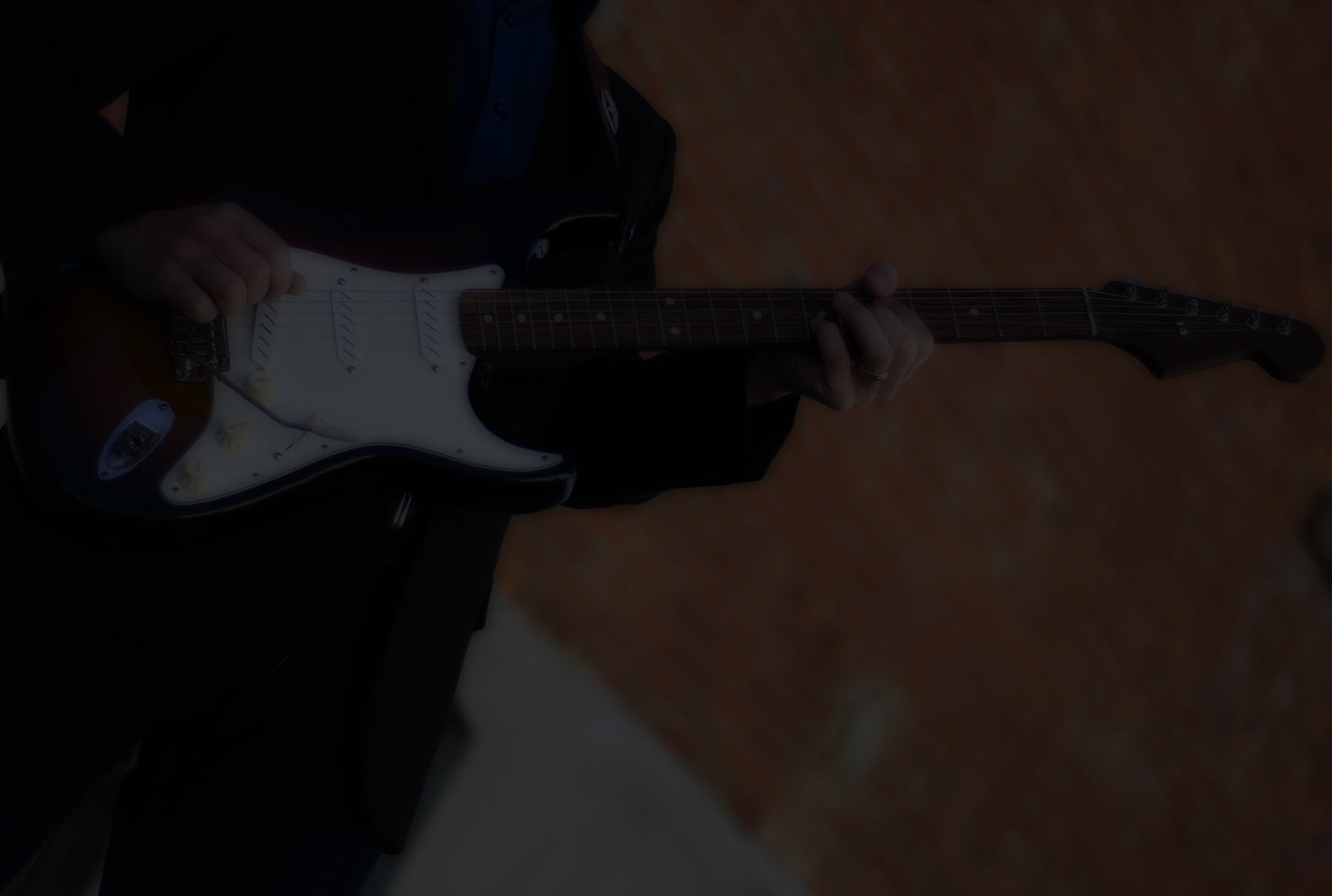Hello, Robert and Clayton and everybody, this would be way too long, but let me lay it out, then I can switch to tweet-form in the future:)
Started as a a no previous experience (i.e., no classical training or actually any training) fiddle player, in the end probably had 100 tunes that I felt comfortable with at a seisun, then realized I needed to get tenure.
After some time, I made a personal commitment to come back to playing music. Nowadays, I get up at 6 am, make the coffee and the lunches, read the newspaper, and then grab the guitar. I play for about an hour on the weekdays and the head off to work, about 3 h on the weekends.
Over the past decade or so, I have looked at the beautiful books by John Ganapes in the Blues You Can Use series, and the National Guitar Workshop Method Beginning, Intermediate and Mastering Blues Guitar series. I also made a thorough study of Arlen Roth's now defunct videos at Gibson.com. Then came DolphinStreet and Robert's great videos, and I have been hooked ever since.
My general pattern is do some scales, rhythm and chords work and then drill into a song or two. Right now my scales work surrounds understanding what scales are being used in various fiddle tunes, like F# pentatonic as the major form in many Scottish fiddle tunes and understanding the consequences of various chord changes. Funny, but making the transition from playing A major pentatonic rocky blues feel to Scottish fiddle tune feel was something like "oh, the fingers are same, aren't they." This insight is from my FiddlePal teacher Doug Brown. Also, Doug got me onto the concept of using the pick as a violin bow and as a rhythmic tool (bad choice starting playing guitar without a pick), and so I have been breaking down everything I thought I knew and reconstructing it lick by lick.
This new approach resonates with some of Robert's lessons, such as thinking of the 'simple' introductory three note phrase in the 6 Killer Blues Licks lesson versus the different pattern in Line it Up.
My chord practice is often on determining the simplest way to move the fingers and maintain a root as one goes between various new shapes. Hard tricks for an old dog. I would also like to work on better understanding the composition of chords and how and what works as you move between them in a progression.
Somewhere in my practice I begin to focus in on a particular lick and figure out how to smoothly integrate it into a chord pattern (12 bar, 8 bar, or whatever) and work on smoothly integrating the lick into the flow of the chord progression. Then I make up a riff pattern and go with that for a while. This is why I love receiving a simple new lick or challenge from MGA each week; I can get several days out of working with that, and trying to move things to new positions on the fretboard and new keys.
Here are a few of the tunes that I am playing these days.
Key to the Highway (in G now, so now I'm thinking about how to work some of the G Country licks into this), Washed My Hands in Muddy Water (also in G, heard from Spencer Davis many years ago, but Stonewall Jackson via the internet), Deep River Blues (E, Doc Watson), Kansas City (G, ala Muddy Waters), Rainin' Down in Texas (G and Gm, SRV), Red House (B, Jimi, also my first purchase of licks from Robert!), Sweet Little Angel (BB, Db), Rock Me Baby (BB, A), King Bee (E), Nobody Knows Atlanta (Barbecue Bob, D), You Shook Me Baby (Willie Dixon, E), Crawdad Blues (Taj Mahal, D), Keep Your Lamp Trimmed and Burning (Hot Tuna, Em), Tennessee Jed (Grateful Dead, C), No Particular Place to Go (Chuck Berry, A), Johnnie B Good (Chuck Berry, Bb), 44 Blues (Howlin' Wolf, F), It Was My Own Fault (Elmore James, C), Bring Me a Little Water Sylvie (D) and then a bunch of trad fiddle tunes like St Annes Reel (D), Flop Eared Mule (D), Bonaparte's Retreat (D), Red Haired Boy and Shaking Down the Acorns (A/G modal), Gilderoy (Am), Soldier's Joy (D), Arran Boat Song (Em), Fisher's Hornpipe (D), Liza Jane (A), Big John McNeil (A), On The Road to Boston (D), Jonah's First Change (D), King of the Fairies (Em), and there's probably some others.
A friend of mine is also trying to teach me a few Swedish fiddle tunes, and I like these on the guitar so far: Spelmans Vals efter Hammarbergs-Hans (D), Äppelbo Gånglåt efter Ärtbergs Kalle, Sorgmarschen efter Jan Olofsson and Hans Alatalo (modal Dm then C?), hopefully she'll teach me a few more.
So thats it, I hope to get better in the ear, better in the picking hand, overall more in tune on the bends (particularly 1 versus 1/2 to drive the I-IV chord change difference), and more capable of finding my way around the fretboard by moving and transposing licks. I'm patient and persistent.
Wow, that's an incredible overview of many things! Really interesting to learn more about you.
Now start logging all the practicing you do in this thread!
Loved your tale.
I am also currently working on Key to the Highway, for my private teacher.
Hey Dan, what key are you playing the highway in?
Saw a great version of Statesboro Blues last night on The Voice,
http://www.nbc.com/the-voice/video/johnny-hayes-statesboro-blues/3494831. Check it out, Johnny Hayes, great voice and presence.
Made me think this morning when I woke up that I should play around with that one. D major, what I am working on is shuffle pattern 1&2&3, then a 5|7-5-7 triplet and out to the next measure. Then, put this all over the neck, ala the 7 licks lesson, thanks Robert. Maybe I can get 15 min or so of playing in tonight...
I'm playing it in A.
A7 E7 D7 D7
A7 E7 A7D7 A7E7
For the chords, I'm playing A9, E9 and D9 on the 12th and 10th frets.
Thanks, I'll try to move what I'm playing to this key. Are you Derek and the Dominos feel or Sonnie Terry/Brownie McGee?
Settled in on the Hendrix-style chord embellishments, for a bit of practice and thinking for the next few days, at least. Trying to think about what scale the arpeggios are following, and why minor pentatonic sometimes sounds bad in here. Also getting it smooth and melodic and on time. One other question, do I have all the major chord forms covered here when I start to transpose to a different key?
Starting to feel some confidence in the chord embellishments, but there are some tricky ones, and started in on the solo also. Making sense to put them back to back and interspersed a bit. I'm about 30% slower than Robert's suggested 65 bpm though at this point.
Take your time... and enjoy the struggle and growth. This lesson has chord inversions, rhythm variations that bleed into solo notes simultaneously. There's a ballad groove to hold and then- There's a feel to capture and then once you have control of it, put it aside and use is as a guide to play the way you feel it sounds coming from you.
Sounds like you're making great progress.
Great to hear! Be flexible and make your own little embellishments from this - change the rhythm, how notes are approached, how much you play before & after, etc.
Clayton, thanks so for the encouragement. I really like your acoustic version!
My acoustic guitar only goes to the 14th fret before the fretboard hits the body so it is a bit of 'skip those parts' realization and then improvisation.
One thing, I'm trying to get a good chording rhythm throughout the entire progression first, and then add the various embellishments as they come.
100 bpm on the 1/8s right now instead of Robert's 65 bpm on the quarters. I need a solid ticker to get the rhythm right out of the blocks, otherwise train wreak ahead.
Ciao.
Robert, I am definitely exploring whether the first note of a lick is only one quarter or 3/8. I guess that pushes the straight up versus shuffle feel. With the metronome, how it feels is clunk/clunk versions clunk../listen../ding. I dont know if that would make sense to anyone but a rhythm failure like yours truly, but thats where I'm right now.
Looking forward to a good 3 h or so this weekend; reward for a busy, busy week.
PS, another one of your great lessons is "How to start a blues" with the many different versions of how and when to start the pickup into the kick-it-off chord.
Bluffy, glad you enjoyed the acoustic version, I get some fun time with that GS mini and it keeps me from taking things too seriously so I can relax and let the spirit take me and the notes fly.
It took me a long time to get the constant changes and hendrix style feel. So wrestling with the rhythm is natural since the music is a hybrid of mostly Jimi with a dose of Robert's style. Getting someone else's style can be very hard and it may not be a part of your DNA. That said, the best thing is to sing.
Yes, sing the notes without and with the guitar in hand. How are you going to play what you can't say? This singing, humming, whatever way you vocalize the tune in your head that you are trying to put into your fingers and the guitar, is an essential element of internalizing and owning the music. After all, the guitar is an instrument comping for the voice.





